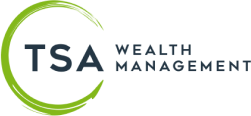The Dividend Fallacy in Retirement
When it comes to stock ownership in retirement, total returns are more important than dividend yield. I touched on this topic briefly during last week’s seminar and received a lot of follow-up questions, so for those that couldn’t attend, here is a 9-minute explainer video.
“But if I need more income from my investments, how do I get it without dividends or interest payments?”
As I discuss in the video, that is where portfolio management comes in. Stocks for the long-run will only work if you are never forced to sell (financially or emotionally) when stocks are down. When stocks are up, you can easily generate sufficient income by trimming some of the gains. In 2023, for example, the S&P 500 had a total return of 26.44% but only 2.21% of that was from dividend income. An investor looking to spend 5% per year from the portfolio shouldn’t ignore something like the S&P 500 just because the dividend is too low.
The trick, of course, is that when stocks are down, you need safe, non-correlated assets that you can draw from for a sufficient time until you believe stocks will have recovered. For some people that will be 2 years of safe money (safe money being short duration, high quality bonds and cash equivalents) and for others it will be 10+ years.
If you need more safe money to sleep at night, go ahead. Most people have a retirement goal that doesn’t require optimizing every penny of return. So if you are the kind of person that gets anxiety just thinking about your portfolio dropping 30%, don’t own a portfolio that can drop 30%. The long-term cost of the cash drag is likely much smaller than the damage inevitably caused by trying to maintain a portfolio that exceeds your risk tolerance, freaking out when the stock market drops, and moving to cash at the worst possible time.
